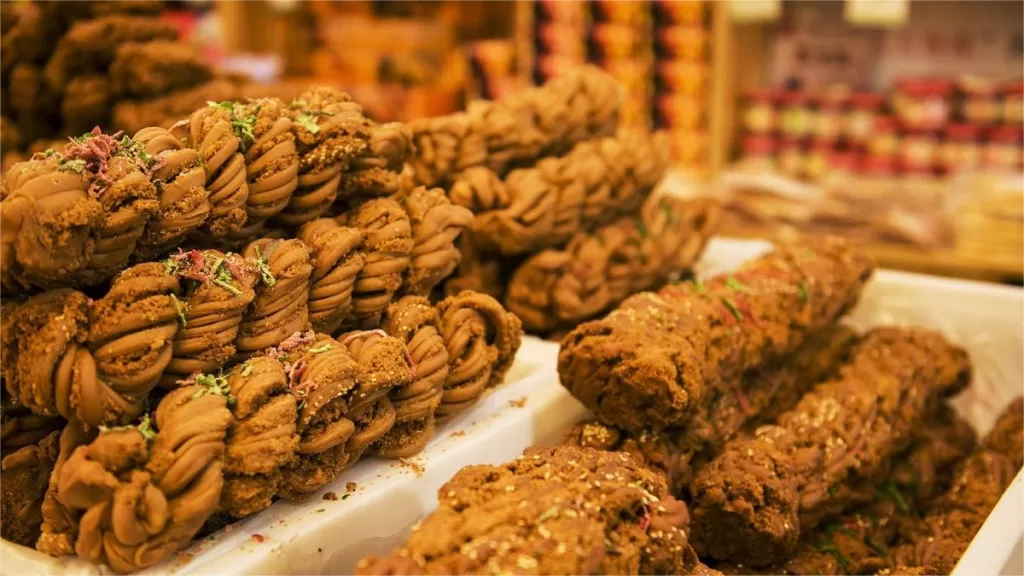天津麻花--中国街头小吃的永恒美味


Nestled in the northern part of China, Tianjin is a bustling metropolis known for its rich history, diverse culture, and vibrant culinary scene. Among its many gastronomic delights, one stands out as a timeless symbol of local culture and a favorite among both locals and tourists: Tianjin Mahua (天津麻花). This delectable and addictive snack has a fascinating history, a unique preparation method, and a taste that lingers in the hearts of those who have had the pleasure of savoring it. In this article, we will take a deeper dive into the world of Tianjin Mahua, exploring its origins, ingredients, preparation process, and its significance in the culinary landscape of Tianjin.
Origins and Historical Significance
Tianjin Mahua traces its roots back to the Ming Dynasty, over 400 years ago, making it an enduring culinary tradition with a rich historical significance. The name “Mahua” translates to “twisted flower” in English, hinting at its distinct appearance. Originally, Mahua was created as an offering to the gods during religious ceremonies and festivals, where it was believed to bring good fortune and prosperity. Over time, this humble snack transitioned from sacred offerings to a beloved street food, becoming an integral part of Tianjin’s culinary heritage.
Ingredients and Preparation
The key ingredients of Tianjin Mahua are simple yet essential in creating its signature taste and texture. The dough is made from wheat flour, water, sugar, and yeast, mixed carefully to achieve the perfect consistency. The dough is then left to rest and ferment, allowing it to develop its unique flavors. Once ready, the dough is skillfully twisted and shaped into intricate patterns, resembling delicate flowers or braids, before being deep-fried in hot oil until it turns golden brown.
The frying process is an art in itself, as the Mahua needs to be carefully turned and flipped to ensure an even and crispy texture. After frying, the Mahua is usually sprinkled with a variety of toppings, adding an extra layer of flavor and visual appeal. Traditional toppings include sesame seeds, crushed peanuts, and a dash of white sugar, creating a harmonious balance of sweetness and nuttiness that tantalizes the taste buds.
Experiencing Tianjin Mahua
To truly experience the magic of Tianjin Mahua, one must venture into the bustling alleys and vibrant streets of Tianjin. Locals and visitors alike flock to numerous street vendors, where the aroma of freshly fried Mahua wafts through the air, creating an irresistible allure. Each vendor often has their unique twist on the classic recipe, showcasing the creativity and individuality of the makers.
As you take your first bite, the crispiness of the outer layer gives way to a soft and slightly chewy center, bursting with the flavors of yeast and sugar. The toppings add a delightful crunch and a hint of nutty sweetness, elevating the experience to a new level of satisfaction. Whether enjoyed on a chilly winter day, complemented by a hot cup of tea, or as a summer treat to beat the heat, Tianjin Mahua offers a delightful taste that transcends seasons.
文化意义
Beyond its mouthwatering taste, Tianjin Mahua carries profound cultural significance for the locals. It represents a link to the city’s past, connecting generations through shared memories and experiences. In recent years, Mahua has gained recognition beyond Tianjin’s borders, becoming a symbol of Chinese street food culture and an ambassador for the city’s culinary heritage.
结论
In conclusion, Tianjin Mahua is more than just a snack; it is an embodiment of tradition, history, and the essence of Tianjin. Its enduring popularity over centuries is a testament to its timeless appeal and its ability to capture the hearts of those who encounter it. As you stroll through the vibrant streets of Tianjin and take that first delightful bite of Mahua, you will undoubtedly become a part of this fascinating culinary journey, cherishing the experience for years to come.